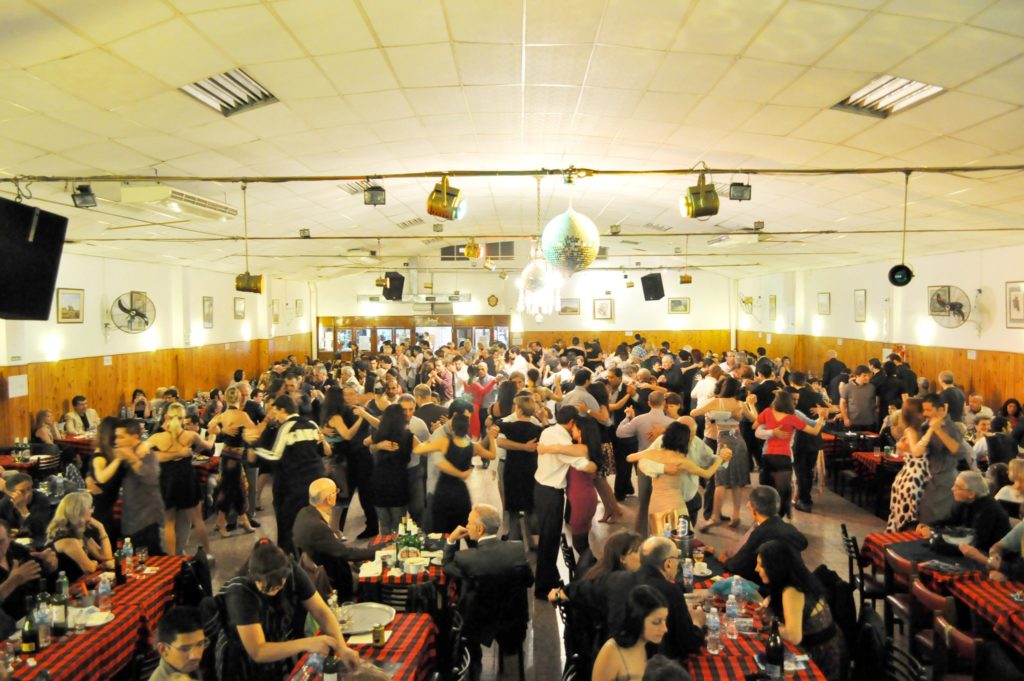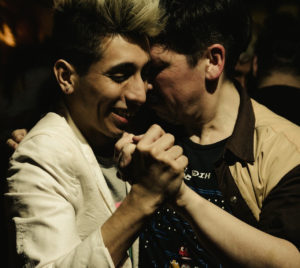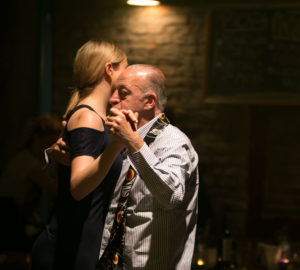
The scene is typical: Tourists from around the globe wait in long lines to catch a Tango Show at one of the many dinner theaters in Buenos Aires, paying excessive entrance fees and often having waited for weeks just to get a seat at the back of the theater. All of this to attend a version of a standard tango show that they most likely would have been able to see in their own country. Times are changing, however, and the era of the Tango Show as the embodiment of authentic tango culture is ending.
The Milonga
The true tango experience today – the real “show” worth seeing – is in the milongas: the social dance spaces that are scattered throughout the Argentine capital.
These spaces are a must-visit for those looking to discover the true tango culture of the Rio de la Plata region. People from all walks of life gather in the milongas, brought together by the shared passion of dancing tango. People of all social classes and socioeconomic levels. People of all religions and political ideologies. People of all sexual orientations, of all ages, of all nationalities.

Embracing diversity through dance
This diverse mix of people, in many cases complete strangers, find themselves participating in a nightly revolutionary act: embracing and dancing, dancing and embracing. All barriers and differences seem to disappear in the spaces of the milongas.
And the real show lies there, in being able to witness this diversity and how it manifests itself in dance, in being able to see how the different personalities, the different styles, the different gestures and movements are expressed through the dance.
These dancers, the “Milongueros“, have shaped the true tango culture that has endured for more than a century, and has spread like wildfire to hundreds of cities around the world.

Tango is an expression of popular culture
It is in the milongas of Buenos Aires where the development and permanent evolution of the tango genre takes place. Tango is not a dance with rigid rules: it is an expression of popular culture that is in constant flux and one that often reflects social changes.
There are certain conventions from the past that are still relevant today, but there are others that are new, that are adapting to the changes in modern society. Popular dance always recounts the contemporary stories of the city. The ‘show’ of the milongas always includes “new seasons” and a “new cast”.

Tango is an expression of popular culture
It is in the milongas of Buenos Aires where the development and permanent evolution of the tango genre takes place. Tango is not a dance with rigid rules: it is an expression of popular culture that is in constant flux and one that often reflects social changes.
There are certain conventions from the past that are still relevant today, but there are others that are new, that are adapting to the changes in modern society. Popular dance always recounts the contemporary stories of the city. The ‘show’ of the milongas always includes “new seasons” and a “new cast”.

To visit a milonga is to experience the tango culture of Buenos Aires first-hand. Real people dancing real tango. It is the best way to understand in depth all the details of this world and understand why tango has spread throughout the planet and become an unprecedented, universal phenomenon like no other dance in the history of humanity.
DIEGO BADO 
Diego Bado is a dancer, teacher and cultural manager and has been specializing in tango for over a decade. He has given lessons throughout Europe and South America, developing his own methodology with a strong theoretical foundation. As cultural manager in the area of tango, he has worked with various dance companies, dancers and musicians, national and international festivals, and throughout the years has organized over 100 milongas in Montevideo, Buenos Aires and Europe. Read more about Diego on his blog.

Diego Bado is a dancer, teacher and cultural manager and has been specializing in tango for over a decade. He has given lessons throughout Europe and South America, developing his own methodology with a strong theoretical foundation. As cultural manager in the area of tango, he has worked with various dance companies, dancers and musicians, national and international festivals, and throughout the years has organized over 100 milongas in Montevideo, Buenos Aires and Europe. Read more about Diego on his blog.




